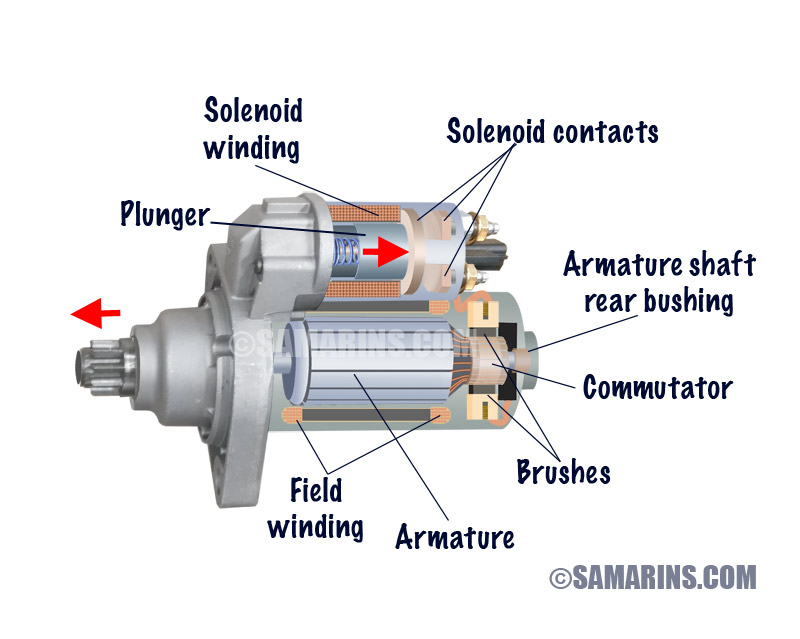igeorge
Member level 5

I have a relay for starter solenoid on my car. Due to increasing number of thefts in my area, I want to put a kind of “kill switch”. Something to stop the starter to turn on.
I want to cut the wire from my starter relay to starter solenoid (30 amperes current) and put my own circuit, which I can control from a small Chinese remote. The 30 amperes relays are big, like here :
https://www.amazon.ca/gp/product/B07G2RCLNJ/ref=ppx_yo_dt_b_asin_title_o03_s00?ie=UTF8&psc=1
I would like to use a solid state version based on mosfets.
I found some schematics, but all of them are or to put the load on the high side or low side.
I want to find a suggestion what to use, and be free to put the load any side I want. Something like having 2 mosfet in series with the sources tied together and the drain free for load.
I am not good at all on analog, so I need a suggestion and eventually a hand drawing of a schematic with part numbers.
Something similar, like here ? Where to put load, and where to put plus and minus ? Can I put them anywhere I want ?
Because I want to put it hidden on my car, not easy accessible, I need a RELIABLE schematic, because if something is going wrong in the middle of the night I cannot just get the starter wires and twist them together to start the car.
Thank you, and please help.

I want to cut the wire from my starter relay to starter solenoid (30 amperes current) and put my own circuit, which I can control from a small Chinese remote. The 30 amperes relays are big, like here :
https://www.amazon.ca/gp/product/B07G2RCLNJ/ref=ppx_yo_dt_b_asin_title_o03_s00?ie=UTF8&psc=1
I would like to use a solid state version based on mosfets.
I found some schematics, but all of them are or to put the load on the high side or low side.
I want to find a suggestion what to use, and be free to put the load any side I want. Something like having 2 mosfet in series with the sources tied together and the drain free for load.
I am not good at all on analog, so I need a suggestion and eventually a hand drawing of a schematic with part numbers.
Something similar, like here ? Where to put load, and where to put plus and minus ? Can I put them anywhere I want ?
Because I want to put it hidden on my car, not easy accessible, I need a RELIABLE schematic, because if something is going wrong in the middle of the night I cannot just get the starter wires and twist them together to start the car.
Thank you, and please help.




